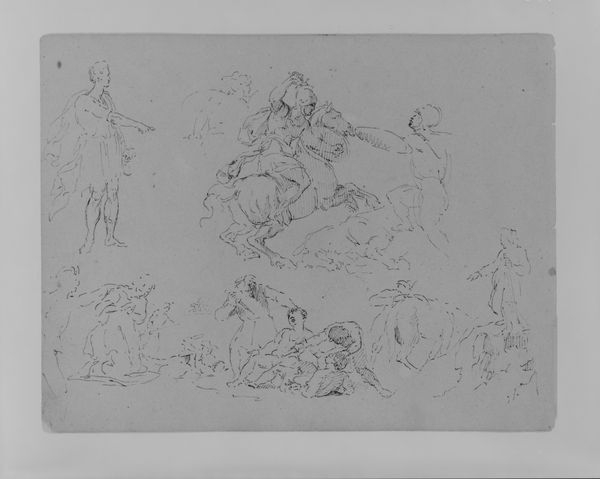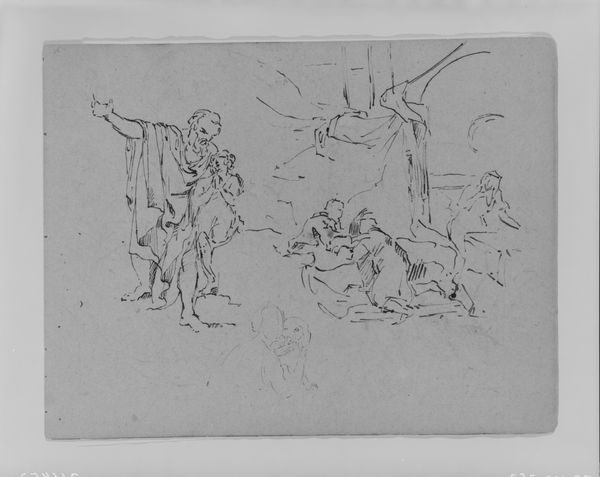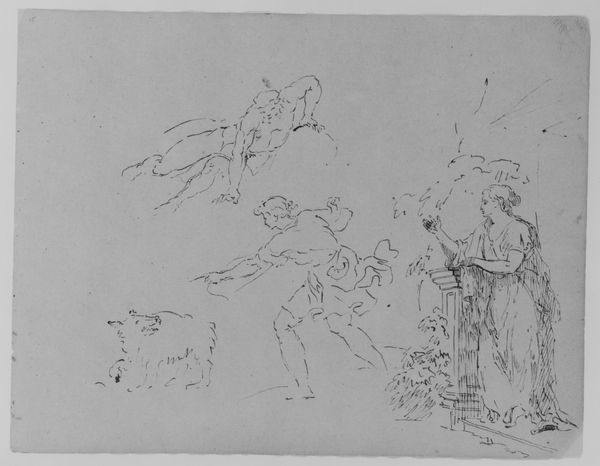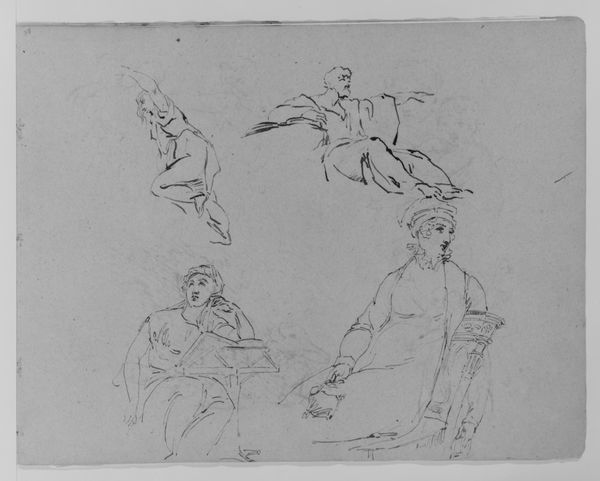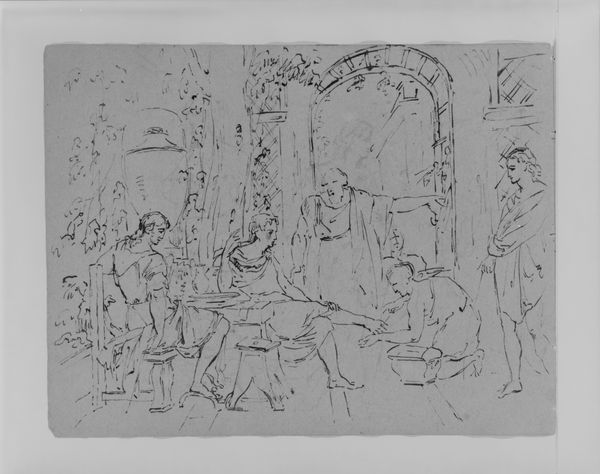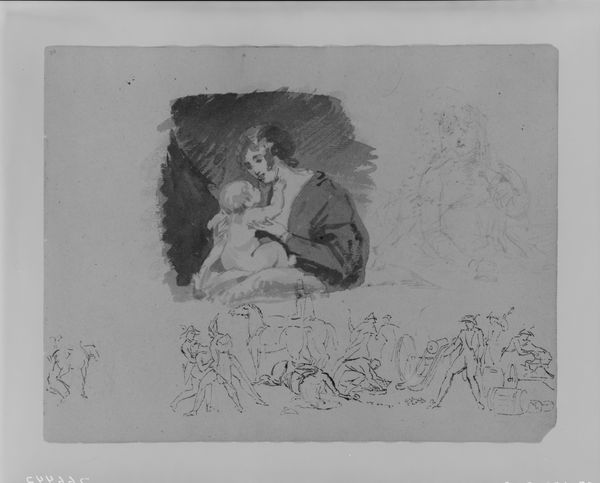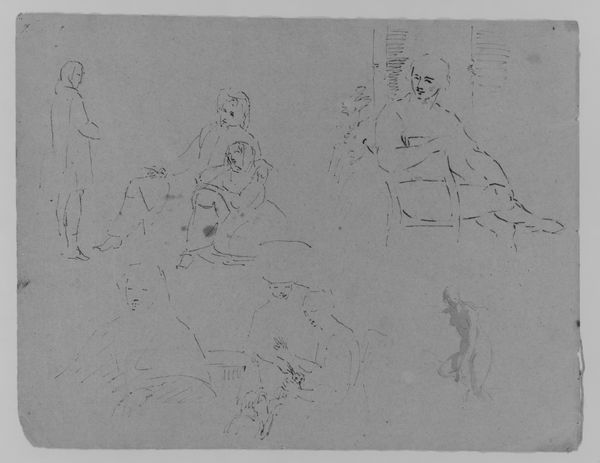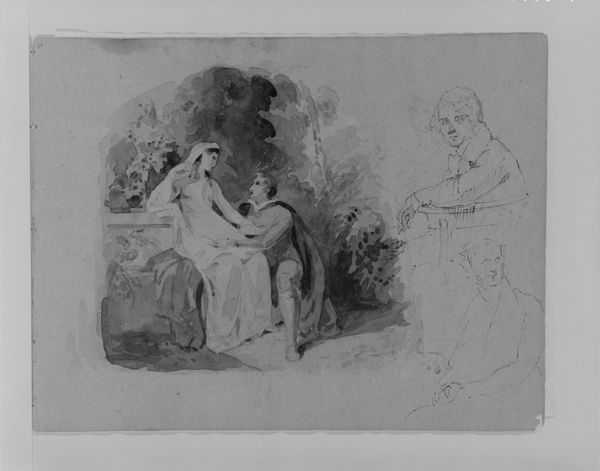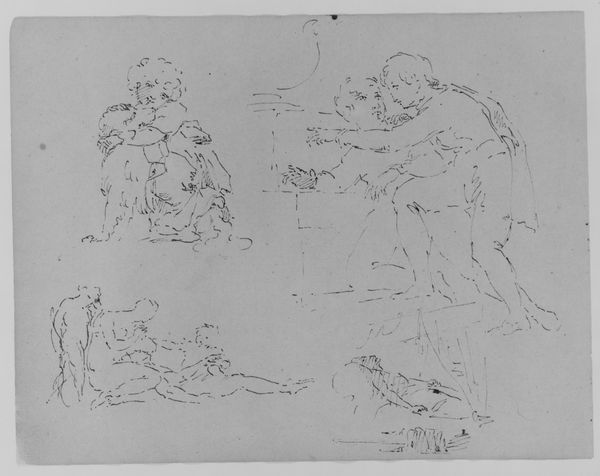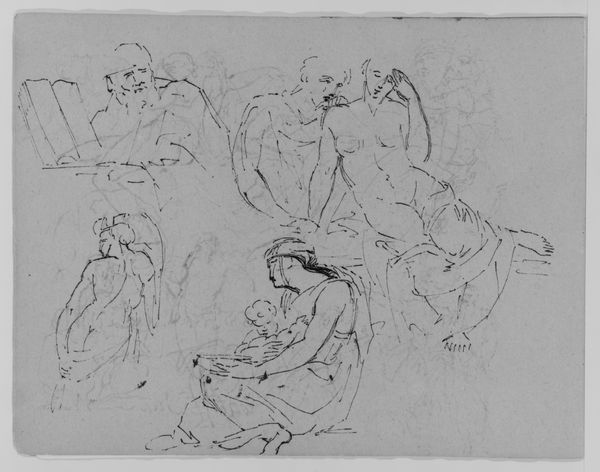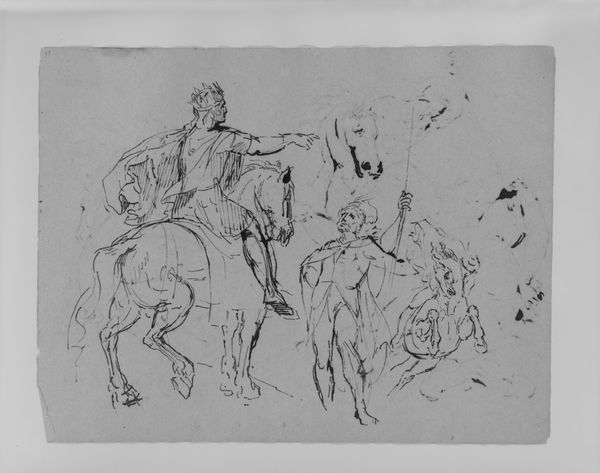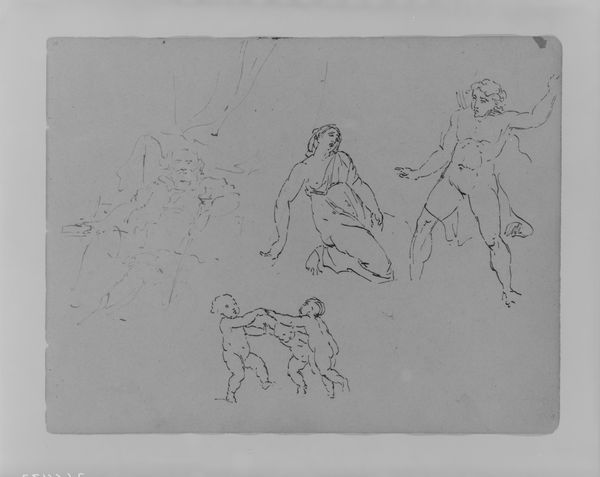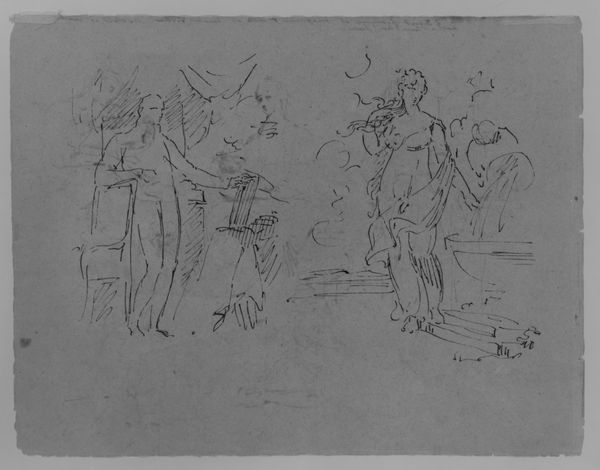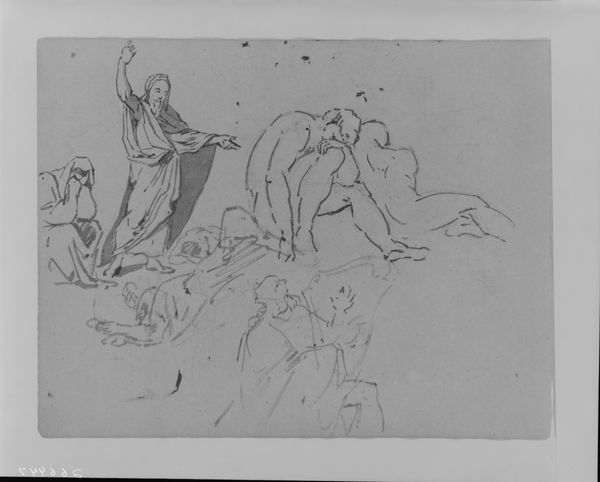
Five Figure Sketches: A Woman Descending a Staircase; Two Children Fishing; Male Seated; Woman Seated (from Sketchbook) 1810 - 1820
0:00
0:00
drawing, paper, ink
#
portrait
#
drawing
#
figuration
#
paper
#
ink
#
child
#
group-portraits
#
romanticism
#
men
#
genre-painting
Dimensions: 9 x 11 1/2 in. (22.9 x 29.2 cm)
Copyright: Public Domain
Curator: What a flurry of activity captured in ink! These gestural sketches immediately spark the imagination. Editor: Indeed. We’re looking at “Five Figure Sketches” by Thomas Sully, created sometime between 1810 and 1820. You’ll find this drawing now at the Metropolitan Museum of Art. The various figures, the woman on the staircase, the seated figures—they possess an almost theatrical dynamism. Curator: For me, it’s the portrayal of everyday life during this era which feels particularly potent. Sully’s piece shows an intimacy between a man and woman; then the joy of children fishing nearby - these sketches encapsulate Romanticism. I’m drawn to its intersectionality. How did societal norms during this time impact family and class dynamics, influencing those little interactions captured here? Editor: I see your point about the glimpse into societal structure. I think about what public life actually entailed for Sully. Considering the lack of formal schooling for children in some parts of the US at that time. Were children such as these given access to the means to progress in life? And how did that tie into ideas about social mobility in that time? Curator: That adds depth, thinking about education and access, reflecting the class disparity ingrained in everyday interactions back then, it prompts vital dialogues regarding power dynamics, identity and opportunity during that period. Editor: Absolutely. The image serves as both artistic expression and also raises significant inquiries. Thinking of how this piece found its place within the Met highlights its role not just as art, but historical artifact and instrument that affects the socio-political perspective. Curator: It's a great tool to use. Sully is demonstrating to us the value of a well-lived human experience, and a celebration of ordinary folk finding love, play, or a simple pastime. Editor: You’re right; ultimately it makes us reflect critically, even to this day, on where and who gets a seat at the table. Curator: Absolutely! Sully has truly created an extraordinary portal for historical conversations around love and privilege during this period. Editor: These sketches demonstrate to us, at large, the powerful ways that art engages with socio-political forces across historical timelines.
Comments
No comments
Be the first to comment and join the conversation on the ultimate creative platform.
